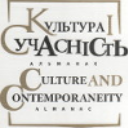СИМВОЛІЧНІ СПОЖИВАЧІ ТВОРІВ ОБРАЗОТВОРЧОГО МИСТЕЦТВА НА АРТ-РИНКУ ТА ЇХНІ МОТИВАЦІЇ
SYMBOLIC CONSUMERS OF FINE ART IN THE ART MARKET AND THEIR MOTIVATIONS
Author(s): Dmytro Igorevich AkimovSubject(s): Visual Arts, Behaviorism, Marketing / Advertising, Sociology of Art
Published by: Національна академія керівних кадрів культури і мистецтв
Keywords: art market; marketing research; motivation of consumers of works of art; symbolic consumption of works of art; behavior of consumers of art market;
Summary/Abstract: The purpose of the article. Research and analysis of algorithms of marketing technologies in the art market by studying the motivations of symbolic consumers of fine arts, namely, individuals who consume products of fine arts through symbolic appropriation. The research methodology is to apply comparative, empirical, and theoretical methods. This methodological approach allows us to analyze the motivations of symbolic consumers of works of art with the subsequent use of research results in the marketing processes of promoting works of art in the art market. The scientific novelty lies in the expansion of ideas about the motivations of symbolic consumers of the fine arts market and in the study of further marketing processes in it. The article analyzes the algorithms of marketing technologies in the analysis of motivations of symbolic consumers of the fine arts market. The article establishes that in the marketing of fine arts it is relevant and necessary to study the behavior of symbolic consumers of works of art as Individuals through the analysis of types of symbolic Consumers, as well as through the analysis of situations of symbolic consumption of works of art as a symbolically appropriated Product at the art market while viewing works of art in exhibition halls. Based on research in the field of art market marketing, we can say that artistic creativity is an area of activity of non-profit public and private museums, gallery and exhibition institutions, as well as large and small businesses, which should professionally analyze consumer motivations, which in turn makes it possible to highly segment consumers of works of fine art in accordance with their motivations. Conclusions. The article defines and analyzes the model of consumption of fine arts by symbolic appropriation, and, accordingly, describes the group (segment) of consumers. We are talking about symbolic consumption, which is associated with the possibility of obtaining aesthetic pleasure through the symbolic appropriation of the work without material possession. It is also proved that consumer behavior in art marketing is determined by three mandatory components: Individual - Product - Situation. It is on these components that the types of motivation are formed, on which the model of consumption and consumer behavior is built. Thus, we have studied individuals who consume works of art, which in turn are products presented in exhibition halls, and we have studied the situations of consumption of works of art that are consumed by symbolic appropriation in exhibitions.
Journal: Культура і сучасність
- Issue Year: 2021
- Issue No: 2
- Page Range: 146-150
- Page Count: 5
- Language: Ukrainian

